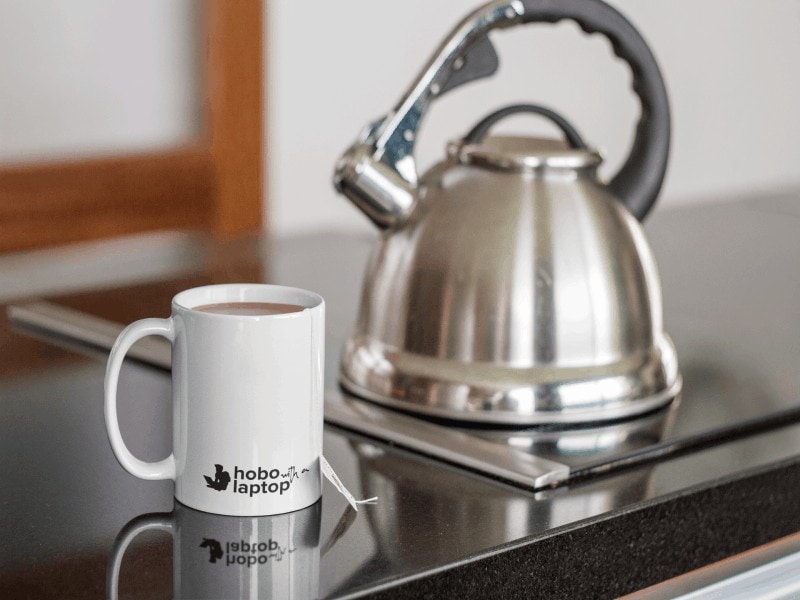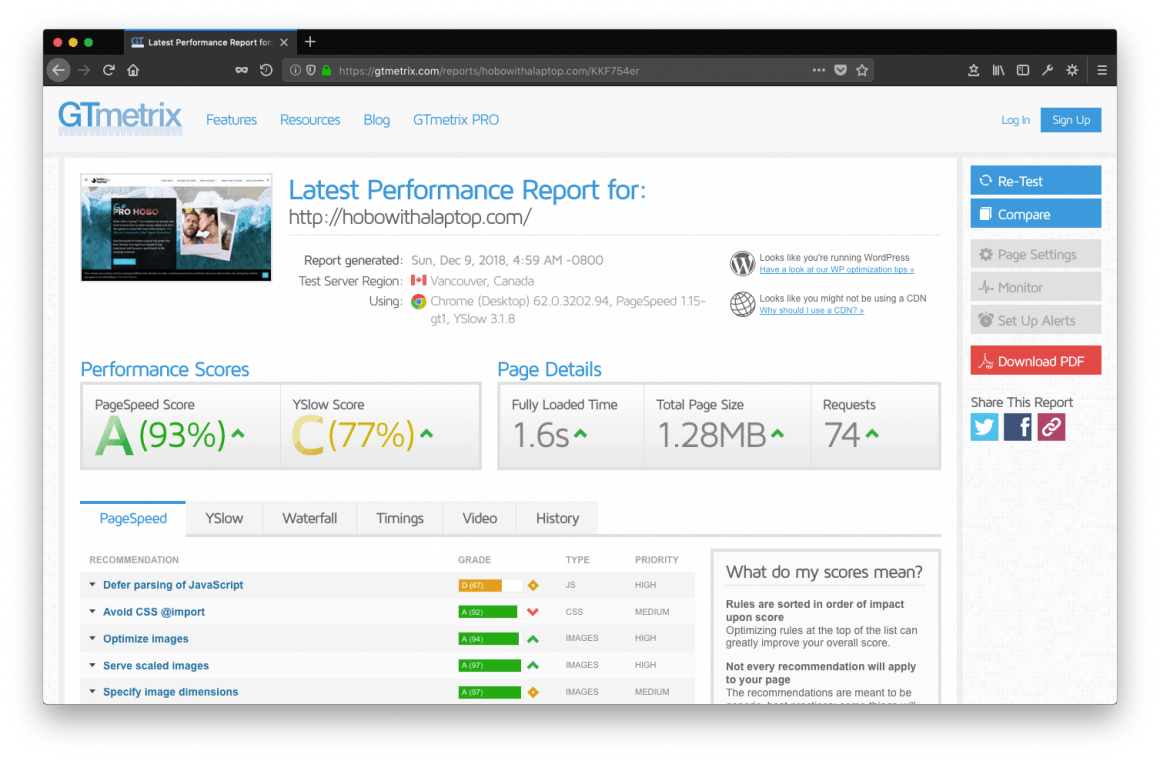

42 of our best tips for how to increase blog traffic, edited for brevity.

The Big List of Blog Traffic-Boosting Tips
Learning how to start a lifestyle blog is already a feat on its own –learning how to drive the insane amounts of traffic required to turn any sort of profit is entirely another.
Competition is fierce, and it doesn’t matter how sharp your personal branding skills are; if no one sees your blog, you might feel like giving up before you ever see the fruit of your labor.
It can take 6 – 12 months for a brand new blog to rank on search engines for the first time, and even longer to increase blog traffic.
With this in mind, I’ve assembled this quick and dirty list of industry-strength content marketing ideas to calm your lifestyle blogger’s “#fomo” and help you increase blog traffic.

Increase Blog Traffic Like a Marketer
These tips come out of our corporate internet marketing experience. We talk a lot about automation and offer some ecommerce-only suggestions for dropshippers that deal with cart abandonment or what to do after a sale is generated –some of these suggestions may seem a little heavy for a beginner’s travel blog.
There’s something here for everyone, whether you’ve got 1,000 hits per month, or 1,000,000.
If you have anything to add, we’d all love to hear from you in the comments.
1. Gauge Headline Effectiveness, Fast
Find out how effective your headlines are with a tool like the Headline Analyzer from CoSchedule. Type in your headline and the analyzer will give you a score on how effective it is in attracting a reader to increase blog traffic.
2. Brainstorm Headline Ideas
Increase the sticky-factor of your content with catchy headlines. Take advantage of tools like Portent’s Headline Generator, where you enter your topic and their online tool provides you with an enhanced version that you can use as your headline.
3. Take Pointers from Influential Content
Tools like Ninja Outreach allow you to gather the most shared content in your niche which you can use as both resource and inspiration. It also lets you track your competitors to see what they are up to with their content marketing.
4. Curating Content
Content curation won’t require you to create content from scratch, but it still demands a lot of time putting together relevant content that your audiences can consume.
Instead of gathering relevant content from a number of different sources, you can use tools like Scoop.it to discover content for you. Tools like this allow you to look for content based on keywords and compile it for publishing.
5. Be Smart with Your Keywords
You don’t want to use the same keywords that your competitors are using, it makes it more difficult to increase blog traffic.
Instead, you want to use specific longtail keywords that tend to be more powerful than broad keywords. WordTracker is a tool that lets you do this by going deeper into your content, analyzing it to see which keyword will get the most attention.
6. Make Sharing Easy
Increase blog traffic by making it easy for your readers to share your content, integrate Twitter or Pinterest sharing. They can click on a Tweetable quote or highlight a section of your article that will prompt them to directly post the tweet on their feed (like the one below).
7. Content Distribution
There are a wide variety of tools like Zemanta that make the promotion and distribution process of content easy for you. Zemanta lets you share your content to other influential partner sites via promoted recommendations, in-text links, or in-stream ads.
Many solutions of this nature will allow you to choose your budget and which demographic you want to target your content to and they will do the rest.
8. Repurpose Old Content
Don’t just leave your old content to gather dust in your blog’s archives, use it to increase blog traffic over the long term. You can recycle old content and automate it to send as personalized recommended content based on your subscriber’s information like their previous downloads or the content that they shared.
A less technical way to repurpose old content is to simply take your most popular content and turn it into another media; create audio “blogcasts” of written content and put it on Soundcloud or iTunes, or create slideshows, infographics, etc and then syndicate them on web 2.0 sites.
9. Reshare Evergreen Content
Evergreen content can be shared over and over again due to its always-relevant nature; meaning it holds the same value today as it did two or three years ago when it was written.
To put this content marketing idea into action and increase blog traffic, try using plugins for WordPress like Revive Old Post that let you automatically share your evergreen content on social media —if that’s something you think is appropriate for your brand, as some brands consider auto-tweeting a bad marketing tactic.

10. Contextual Content
Dropshippers can enhance their user’s experience by providing them with personalized content to increase blog traffic and loyalty.
Like Amazon, where products similar to those in your purchase history are displayed in the recommended section, you can seek widgets, tools, or plugins that collect intelligence about the pages your user has visited and recommend to them content that’s similar to those pages.
Shopify and BigCommerce have plugins to make this possible.
11. Help Your Virtual Assistants Collaborate
Some marketing automation tools like HubSpot and Pardot can automatically send report updates to a group of users from different teams so everyone is aligned to working on the same goal.
12. Post-Purchase Drip Campaign
A drip campaign after a purchase on your ecommerce website is a great way to nurture a client and increase blog traffic.
Continue to provide your customer with value after they’ve made a purchase through a drip campaign; send weekly product updates or a free instructional guide on how to maximize their time at their travel destination.
13. Build a List of Your Active Followers
Automate this process with a marketing automation tool like Zapier and Google docs to build a list of every tweet which has your blog domain in it.
Keep the names of the people who share your content and use them as starting point for sharing your next upcoming content.
14. Report on Content Performance
Look at your Google Analytics to identify your best and worst performing content on an ongoing basis.
This provides you with insight on what your audiences like and the topics you should focus your efforts on to increase blog traffic.
“Content is the reason search began in the first place” – Lee Odden
15. Email Draft After a Form Submission
Applications like FormDesk enable bloggers to have an email draft automatically created within your email account every time a user fills out a form on your site. Save time and make it personalized by reviewing the draft and editing it before hitting send.
16. Blog Subscription Form
Maintain and grow a following on your blog by including a blog subscription form. Either have it as a pop-up or a call to action at the bottom of your blogpost prompting customers to subscribe for more of the same content that they just read.
17. Gradually Build Visitor Information Profiles
You don’t want your visitor to fill out a dozen fields in the site form the first time that they visit. You can slowly build their profile by capturing additional information after every site visit.
This is possible with user accounts for your WordPress website, forum, or ecommerce site.
18. Email for Download
A content asset can be an online guide, an eBook, video, slideshow, podcast, etc.
Anything that provides valuable, helpful information about your industry or offering to the reader. Build a landing page with an offer of a content asset in exchange for the user’s contact information.
We’ve got a few examples of email for download assets throughout our website, and you can view them all here.
19. Landing Page A/B Testing
If you’re torn between two looks for your landing page, you can automate an A/B testing to see which of the two landing pages increase blog traffic the most.

20. Thank You Pages or Welcome Emails
Give your user something to smile about after they have just filled out a form on your website with a Thank You or Welcome note.
Thank You or Welcome pages can be accompanied by a sales offer, a chance to connect through social media, or a snippet of related content. You may also highlight what perks the subscriber will get for signing up for your company.
21. Push Notifications
Use push notifications to notify your customers directly of your latest offers or content to increase blog traffic. Set your push notifications to only send during times when your customers are more likely to take action on booking a room or subscribing to a service.
22. Reader Feedback with a Questionnaire
Follow up with your customers to get feedback on your service during their stay. It can be in the form of an automated email containing a questionnaire that will send a few days after your customer has received your product. This helps you collect more data that you can use to further enhance your business.
23. Good Looking Social Snippets
Your content’s social snippet can affect its shareability so make sure that it looks good and has all the information the user needs such as the title, preview image, and description.
A simple way to increase blog traffic with rich snippets is to pick up Yoast SEO or a Table of Contents plugin for WordPress.
24. A/B Testing on Email Sender Name
Sometimes, it’s not the subject line of the email that matters but the person who sent it.
Try to find out which email sender your subscribers respond to best. Simply change the display name of the sender to your marketing name and then change again to your brand name. See which of the two gets the most response.
25. Promote Content with Personalized Emails
Take advantage of your subscriber’s information by personalizing your email right when you are promoting new content for your brand. Doing this helps you establish a deeper relationship with your followers while providing them with value at the same time.
26. Notify Readers of an Event
Whether an event is in-person or online, three separate emails could be automatically sent to your customers at different times to notify them of important details. The event doesn’t need to be your own –it just needs to be something your audience will be interested in. Events are a great excuse to say hello and remain relevant.
The first email being a general description of the event, the second is a reminder to sign up, and the third one is to notify them of the last chance to participate. Add an incentive to encourage more customers to share your email or join.
27. Double-Open Email Marketing
Send an email to your list and wait one week before you collect the names of those who didn’t open it. Send the people on the “Didn’t open” list the same email only this time, with a different subject line.
Doing this gives your “non-openers” the opportunity to see your message again in case they weren’t able to the last time and increase blog traffic from people who already know who you are.
28. Reward Loyalty
Delight your most loyal customers/readers with an automated email thanking them for their loyalty, and as a sign of appreciation, you’re offering them a discount or coupon for a product or service you know they’ll find useful. So many companies are willing to give bloggers a few free software licenses if they’re going to promote for them.
29. User-Generated Content
Content marketing for your blog is not just limited to the all that you create, but also that of your users or other publishers.
You can use user reviews, comments, and testimonials to encourage new sales or email sign ups, or use services like Back.ly to piggyback your content onto other publisher’s content.

30. Lead Qualification
Focus more on sales by automating the lead qualification process. Most marketing automation tools allow you to qualify leads based on metrics that you can customize.
31. Prioritize Leads with Lead Scoring
You will want to spend more time on your best leads. Marketing automation tools like Marketo help you keep track of which leads meet your qualifications and can rank them based on their likeliness to convert.
32. Follow-up with Visitors in Real Time
Know when a lead is considering your company by tracking the time that they visit your site.
Some tools let you receive alerts that tell which page your visitor is looking at. You can use this opportunity to call them right when they have just thought of your company.
Live chat and services like LeadLander are tools that can help you achieve this.
33. Follow up Abandoned Carts with an Offer
An abandoned cart is a user that was interested in purchasing from you but decided not to buy the last minute.
Take this opportunity to spark interest in your abandoned cart again through an automated email with an offer such as a discount or a coupon.
This is best done within three hours from the time that the user abandons a cart, so timing is critical.
34. Incentivized Sharing
Referring your product or service to another user in exchange for a free product or extended use of a service is called incentivized sharing. Doing this ensures that you receive a consistent stream of customers in your business. A great example is Dropbox where you get additional storage through two ways: refer Dropbox to friends or pay for it.
However, be warned that Google has a serious problem with blatant, misleading paid reviews from bloggers for link building.
35. Schedule Occasional Special Offers
Let followers who have yet to become customers know what your brand has to offer through social media. Share your offer together with a link to the landing page where the user can claim the offer to increase blog traffic.
36. Re-Engage Inactive Leads
Inactive leads are those who have shown interest in your business but have not come back to learn more about it. Take the opportunity to get more customers by re-engaging your inactive leads through an email with an offer like a free trial or a discount.
37. Auto Follow-up Fresh Leads
Get in touch with your freshest leads and make your business a prominent thought in their head through a follow up after a site visit.
Do this within one hour from the time that they visited your site.
A study says that you are more likely to gain a lead if the follow up is within an hour. You don’t have to be around real-time to do this but instead, use automation software to send them an email.
38. Automate Social Media Sharing
Schedule your content to post to various social platforms at different times using one centralised automation tool like Hootsuite, Edgar, or Buffer to increase blog traffic.
This helps you save time and gives a better overview of how your users are interacting with your content across different platforms.
Mind blown: 42 Ways to Increase Blog Traffic, Written by an Anal-Retentive Content Marketer
39. Analyze Social Media Channels
Most marketing automation providers let you see all your social media profiles in one integrated dashboard. You get to see how well your campaigns are doing based on the data in the analytics.
40. Audience Retargeting
Tools like Perfect Audience allow you to capture your user’s cookie information which you can then use to distribute ads on Facebook, Twitter, and the web to increase blog traffic.
You can also do this through email where you can add an email pixel to see who opens your email using a browser and retarget from there.
41. Influencer Search
Search for influencers using a cheap automation tool like Ninja Outreach and spark up some new relationships (it’s got a 14-day free trial, and there’s a lot you can do in 14 days).
Ask influential bloggers if you can write a guest post on their blog, or if they’d like to write a post on yours.
Or write really substantial content on your own website that relates to a popular post on theirs, and ask if they’d like to provide additional value to their readers by linking to it.
42. Schedule Reports
Schedule reports to be generated and released under specific criteria; traffic or sales milestones, notable changes or disruptions in your analytics, and site outages are all factors that can be used to trigger automatic reporting with a variety of tools, so you never miss important occurrences.

In Summary
That’s it for this giant list of blog traffic hacks; anything to add to our list of tips and ideas for increasing blog traffic? I’d love to hear from you in the comments.


Check Out Our Free Blogging Course!
If you found this post helpful, check out the rest of our free blogging course.
You’ll learn how to start a blog from scratch, make passive income –and much, much more!
Learn BloggingSmaller Images, Faster Loading Times, Higher Search Rank
Ideally, your WordPress blog will load in 2 seconds or less.
We use ShortPixel to shrink our images and it’s improved our search rankings dramatically.

Page loading time is a massive priority –not only for Google Search optimization, but also for visitors who tend to click away when a page takes too long to load.
Stop putting off faster website loading times, it’s hurting your wallet. Check out ShortPixel.





